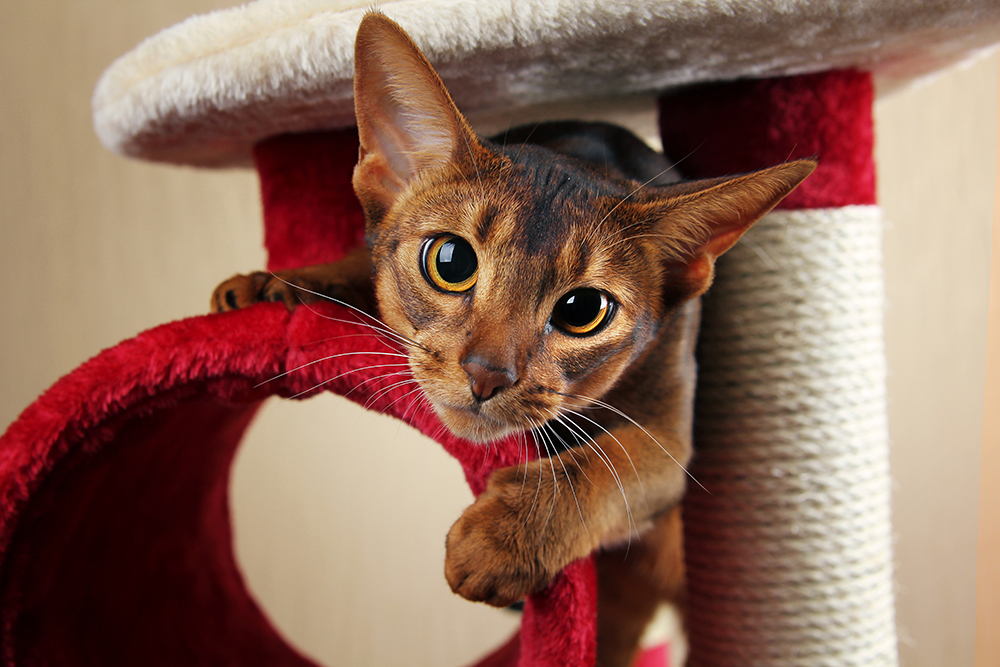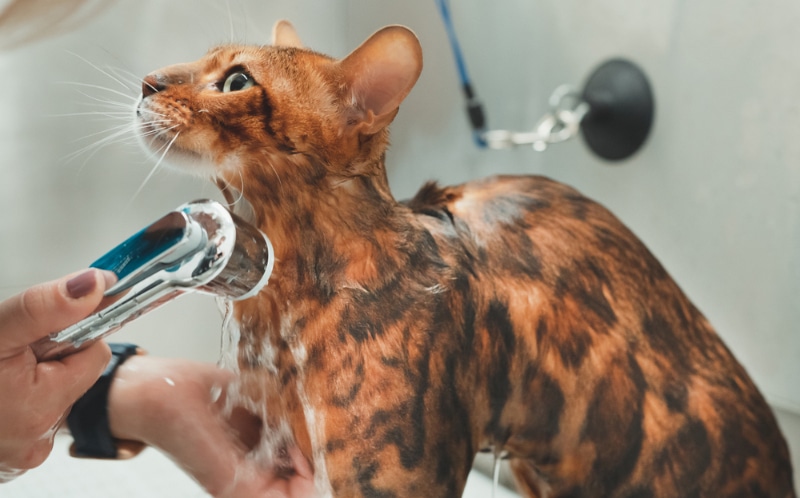Click to Skip Ahead
Glue flytraps do an excellent job of eliminating pesky flies, mosquitos, and other insects. Sometimes, these traps can accidentally get stuck to a cat’s fur when one goes in to investigate the sticky substance and trapped insects. If you’re looking for ways to get flytrap glue off a cat, you’re in the right place.

What Are Glue Flytraps?
There are a few types of flytrap devices you can use, and they all have a sticky substance, whether it’s glue or sticky paper tape. Flytraps, such as Raid fly ribbons, do not usually contain any poisonous or toxic ingredients and consist of an adhesive such as rosin and mineral oil. When flies or other pesky insects land on the strip, they become stuck and die. It may not be a pleasant death, but it does the trick.
Nonetheless, the sticky substance will have to come off your cat at some point if it gets on the coat; the last thing you want is for your cat to get his tongue stuck to his fur while self-grooming. It’s best to hang these devices in areas your cat cannot reach; however, accidents can happen, and your cat may come in contact with the sticky stuff by accident.
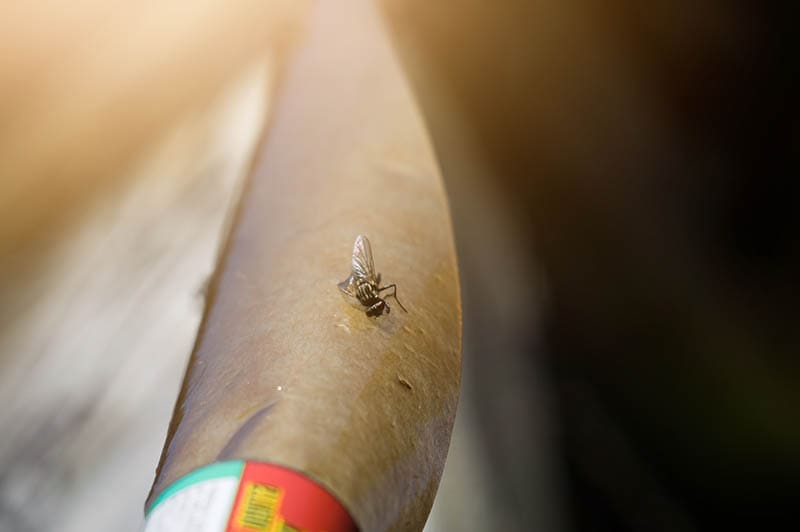

Before You Start
An important note we want to make is to remain calm if you see your cat tangled up in flytrap glue. Your cat can hurt himself if he gets riled up from being stuck, and the glue could rip the skin. It’s often best to gently restrain your cat with a towel to calm him down before you begin removing the glue.
How to Get Flytrap Glue off a Cat Fur
Without further ado, here are four simple steps to rid your cat’s fur of the sticky substance.
1. Oil is your best ally

Grab some vegetable oil, canola oil or olive oil. Pour the oil onto the flytrap and begin massaging where the trap is stuck to your cat.
2. Pull gently
Once the trap’s glue has softened, you should be able to gently pull it off your cat but ensure it is loosened so you don’t harm your cat and rip any skin or fur off.
3. Comb
Gently pour a little oil into the area of the fur and massage the oil to loosen the glue. Once the adhesive has softened, brush the fur with a fine-toothed comb.
4. Wash
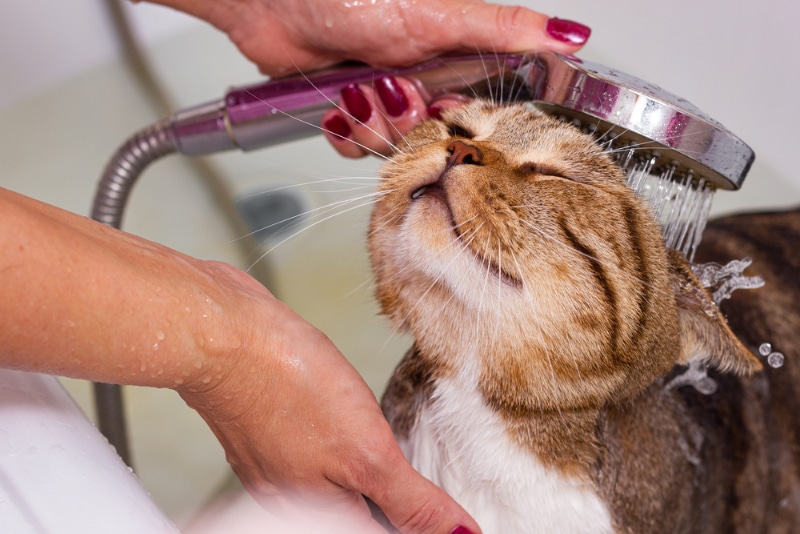
Wash the area with a cat safe shampoo to remove any residual oil from your cat’s fur.

How to Keep Your Cat Safe from Flytraps
While glue flytraps are not toxic to cats, you still want to keep your cat away from encountering the sticky substance to avoid this problem. Ensure you hang the traps out of your cat’s reach. Cats are expert climbers, so keep this in mind while choosing a place to hang the device.
Avoid hanging one in an area where your cat can climb to it, such as above a self or some other object your cat can jump up on. Cats are curious and love to bat at objects, and if he bats at a glue flytrap, odds are, the device will get stuck to the paw.
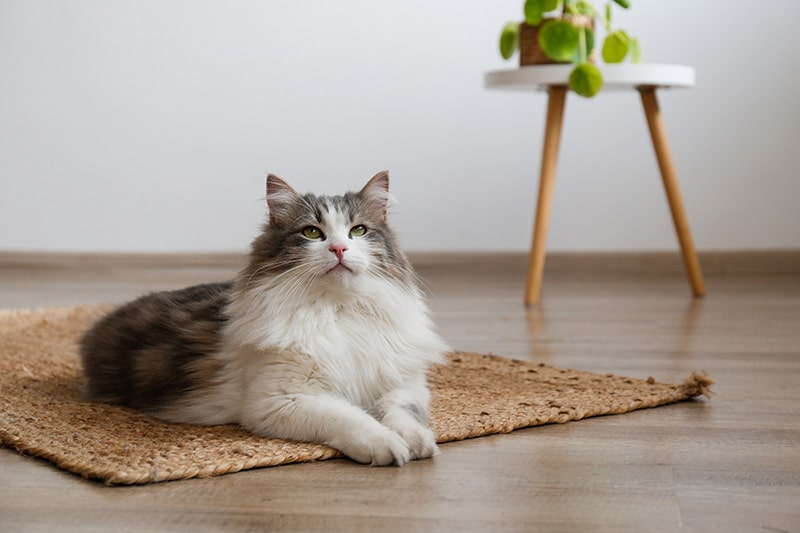
Are Glue Traps Humane?
Glue traps are sometimes used to kill rodents, such as mice and rats, making for a long, terrifying, and agonizing death to these animals. Some even chew their limbs off in an effort to break free but die anyway due to blood loss. Moreover, non-targeted animals, such as birds, squirrels, snakes, lizards, chipmunks, and others, get stuck in these traps and also die. We urge you to use a quicker and more humane method to rid your home of these types of animals.

Final Thoughts
Glue flytraps are effective in killing flies and other pesky insects. If you’re a cat owner, it’s important to hang these devices in areas your cat cannot reach. While non-toxic, your cat can panic if a fly glue trap gets stuck to the fur or paw, which could result in injury if not dealt with immediately.
If your cat encounters a glue flytrap, you can remove the glue from the fur or paw using the steps mentioned above. If it is not easily removed then you should seek veterinary assistance.
Featured Image Credit: Vershinin89, Shutterstock



